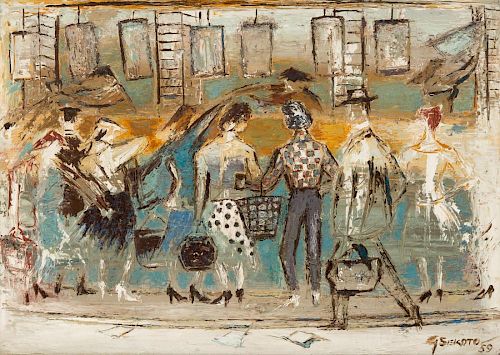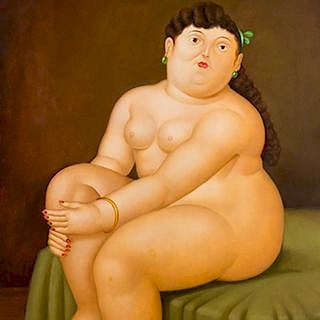GERARD SEKOTO (SOUTH AFRICAN 1913-1993)
About Seller
566 East Boston Post Road
Mamaroneck, NY 10543
United States
Our auctions feature an impressive selection of fine art, decorative art, rare books, icons, militaria, and other objects from antiquity to the present. Shapiro Auctions advertises globally and has clients all over the world, while providing a rare combination of personal service and the ability to ...Read more
Two ways to bid:
- Leave a max absentee bid and the platform will bid on your behalf up to your maximum bid during the live auction.
- Bid live during the auction and your bids will be submitted real-time to the auctioneer.
Bid Increments
| Price | Bid Increment |
|---|---|
| $0 | $25 |
| $500 | $50 |
| $1,000 | $100 |
| $2,000 | $250 |
| $5,000 | $500 |
| $10,000 | $1,000 |
| $20,000 | $2,500 |
| $50,000 | $5,000 |
| $100,000 | $10,000 |
| $200,000 | $25,000 |
About Auction
Sep 17, 2016 - Sep 18, 2016
Shapiro Auctions info@shapiroauctions.com
- Lot Description
GERARD SEKOTO (SOUTH AFRICAN 1913-1993)
Figures on a Paris Street, 1959
oil on canvas
32.8 x 46 cm (12 5/8 x 18 in.)
signed and dated lower right
LOT NOTES
One of South Africa`s most acclaimed artists, Gerard Sekoto spent most of his life in a self-imposed exile in France. Having begun to achieve fame while still living in Johannesburg in the 1940s, Sekoto`s candid images of black life during the Apartheid earned particular praise for bringing attention to the everyday injustices without conveying a sense of desperation or victimization on the behalf of the author. In fact, while Sekoto was contemplating moving to Europe, his friend John Koenakeefe Mohl attempted to convince him to stay in South Africa and remain an important voice within the country. Despite this, the call of Paris, or mecca as Sekoto described it in his 1969 autobiography, proved too great to resist. Having seen his friend Ernest Mancoba lead a much more successful and less constrained career in Europe, and more significantly, believing it as a way to escape the oppression of Apartheid, Sekoto left for Paris where he remained for the rest of his life.
This Parisian Scene is an early piece, painted just a bit over a decade after Sekoto emigrated, and only six years after his first successful international exhibition. The work shows much of the same spontaneity that his earlier, South African, pieces were praised for and propelled his success. It was only around this time that Sekoto was able to give up his job as a nighttime musician in a club and turn his focus entirely to his painting.Dimension
Height: 25000.00Width: 25000.00Depth: 25000.00Depth: 25000.00Weight: 25000.00Condition
fulltext
- Shipping Info
-
- Buyer's Premium



 EUR
EUR CAD
CAD AUD
AUD GBP
GBP MXN
MXN HKD
HKD CNY
CNY MYR
MYR SEK
SEK SGD
SGD CHF
CHF THB
THB














